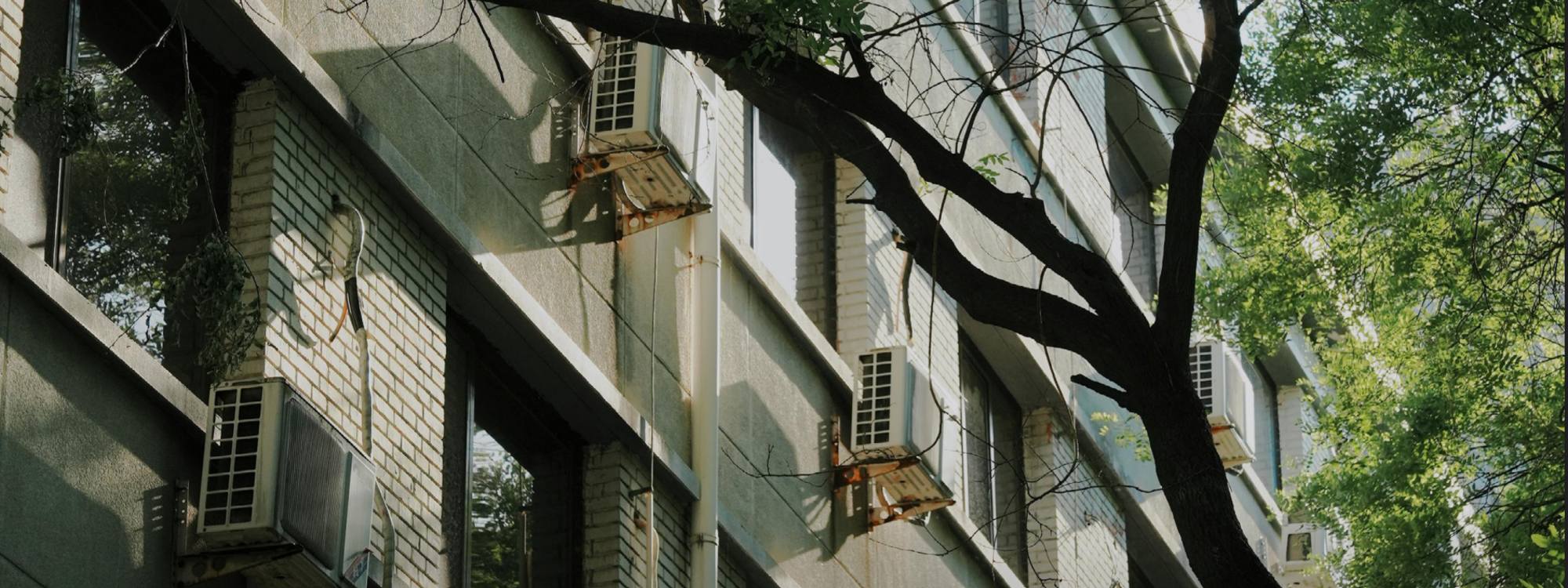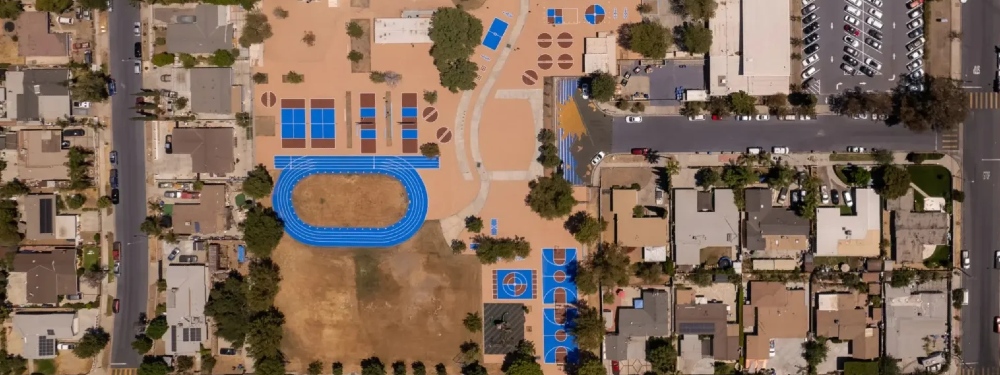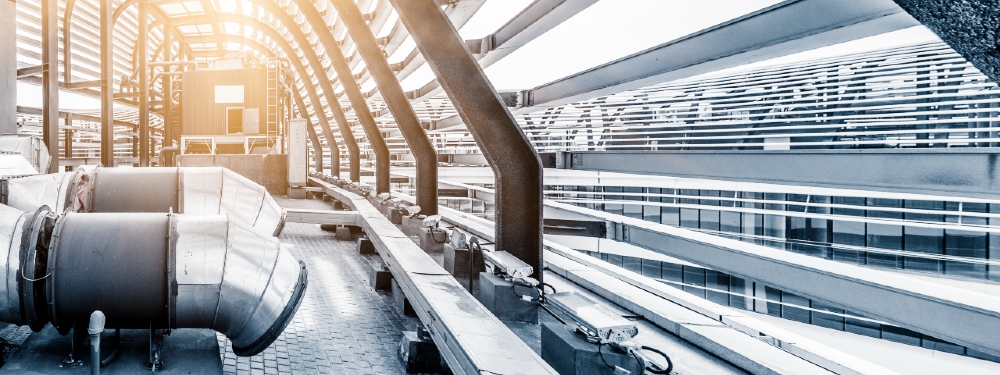Indonesia’s Cool Roofs Champion
Architecture professor Beta Paramita is on a mission to help cool the people, buildings, and cities of Indonesia with the use of a simple but effective climate-friendly solution – cool roofs. Read more about Beta’s work below or watch this short film produced by BBC StoryWorks Commercial Productions for the Clean Cooling Collaborative.
For more than 40 million city dwellers across Indonesia, the familiar combination of rising temperatures, uninsulated housing, high costs of buying and running cooling appliances, and unstable electricity supply threatens their health and livelihoods.
This is the case for an elderly couple and their grandson living in Tangerang – an industrial city on the outskirts of the Greater Jakarta metropolitan area. At night it can be too hot to sleep and during the day, high temperatures make it difficult to study.
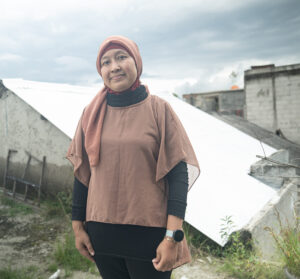
According to Beta Paramita – architecture professor at Universitas Pendidikan Indonesia (UPI) and Project Manager of Cool Roofs Indonesia (the winning team of the Million Cool Roofs Challenge) – this is quite typical of low-income housing in Indonesia’s cities.
Having studied urban heat islands[1]A metropolitan area that is significantly warmer than surrounding areas due to factors like less green space, more heat-absorbing materials (e.g., concrete and steel), and waste heat from human activities. for many years, Beta is on a mission to help cool the people, buildings, and cities of Indonesia with the use of a simple but effective climate-friendly solution – cool roofs.
The benefits of a cool roof
On a hot day, a black roof can reach over 150°F (66°C), radiating heat into the building below, as well as the surrounding area. By applying a specially-designed solar-reflective coating to a building’s roof, it absorbs less of the sun’s radiation, reducing internal temperatures by multiple degrees and improving thermal comfort for the building’s inhabitants.
If deployed across a whole community, cool roofs can reduce local ambient temperatures and help lessen the urban heat island effect.
In addition to providing thermal comfort to those who don’t have access to cooling appliances like fans and air conditioners, cool roofs also help reduce the need to switch on appliances for those who do have them, cutting energy consumption. In a country like Indonesia, where the majority of electricity comes from coal-fired power plants, reduced energy use can significantly lower greenhouse gas emissions, while also supporting the country’s transition to renewable energy by lowering demand on power grids.
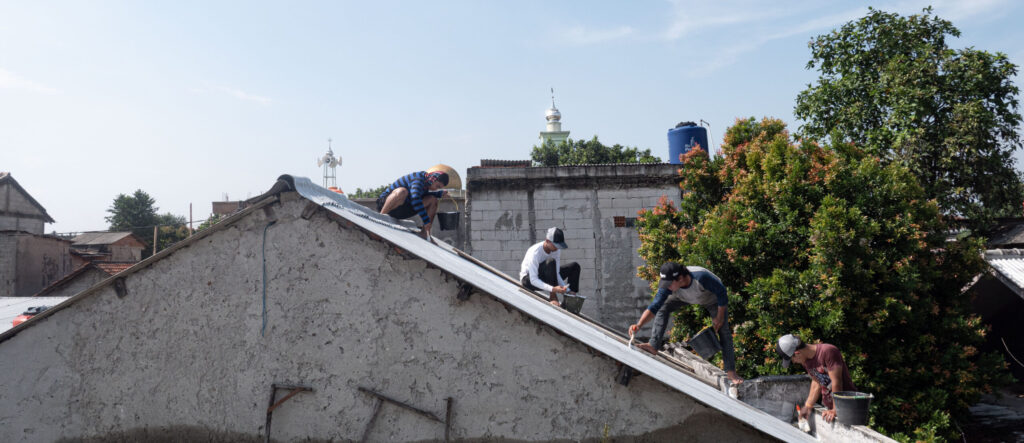
Scaling up cool roofs in Indonesia
Under the Million Cool Roofs Challenge, Beta and her team expanded the use of cool roofs in Indonesia, coating 70 buildings across 15 cities. In total, the team estimates that more than 10,000 people will benefit from the new cool roofs.
Beta’s team saw some of the Challenge’s most impressive reductions in indoor temperatures. At one industrial site, indoor temperatures dropped by around 20°F (11°C), from 104°F (40°C) to 85°F (29.4°C) following the application of the cool roof coating. And at an elementary school, a cool roof helped reduce indoor temperatures by 5.4°F (3°C).
Since winning the Challenge, Cool Roofs Indonesia has used some of its prize money to install cool roofs on more than 40 public and community buildings, with a plan to continue to deploy the technology at a similar rate over the coming years.
Through UPI and in partnership with the University of Florida and Milenium Solutions, the team is also working to make cool roofs even more accessible by scaling up local production of cool roof materials, which in turn, will reduce production costs. The team has registered a national brand and continues to optimize the formulation of cool roof materials to make cool roofs more effective and durable.
UPI is working to set up the country’s first building energy research center and test lab to establish credible rating and certification systems for cool roof products and other building materials. In turn, this will help provide reliable performance data for consumers and policy makers, enable the development of viable business models, and spur the growth of the market
Beta and her team have established distributors of their cool roofs product across 10 cities and are actively promoting the application of cool roofs on commercial and residential properties. Several commercial property managers and developers are exploring partnership opportunities and Indonesia’s Ministry of Public Works and Housing is working to develop design guidelines that integrate cool surfaces into affordable modular housing.
Beyond cool roofs
While cool roofs can bring many benefits to a city, they cannot solve Indonesia’s cooling challenge alone. From other passive measures like better building design and urban planning, to mechanical options like super-efficient fans and air conditioners or district cooling, a variety of climate-friendly cooling solutions will be necessary.
To support the adoption of these solutions, a range of policies, technological developments, and financial initiatives are needed.
Indonesia is taking action on clean cooling, having recently strengthened its mandatory minimum energy performance standards (MEPS) for air conditioners and refrigerators, and expanded them to include fans. While the country’s AC standards are in line with most other ASEAN (Association of Southeast Asian Nations) markets, they are well below international benchmarks for model regulations, providing considerable opportunity to increase their stringency.
In December 2022, Indonesia ratified the Kigali Amendment to the Montreal Protocol[2] The Kigali Amendment is an international agreement that will phase down the use of super-polluting hydrofluorocarbon (HFC) refrigerants that are often thousands of times more harmful than CO2., with plans to implement the agreement this month. By transitioning to climate-friendly refrigerants, the climate-impact of Indonesia’s air conditioners will be dramatically reduced. An accelerated transition would have an even greater positive effect.
Indonesia is also in the process of developing its first National Cooling Action Plan (NCAP). This will create a comprehensive and holistic approach to tackling the county’s cooling challenge moving forward.
With more than 2 billion square meters of new residential floor area expected to be built across Indonesia by 2030 — and an additional 22 million new air conditioners expected to be installed over the same period — scaling up the adoption of cool roofs and other clean cooling solutions across the country will have a significant impact toward reducing the country’s energy demand and expanding vital cooling access for millions.
